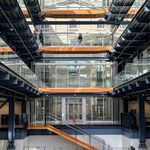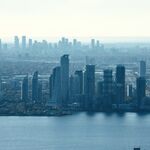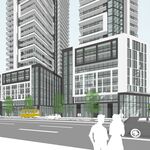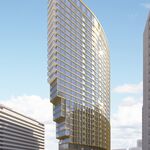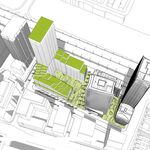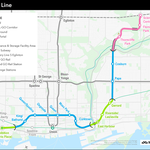Standing at the northwestern edge of Concord CityPlace's Block 36 North, Mayor John Tory announced a plan to create a 21-acre park above the rail corridor that cuts through an area that has quickly become a part of Toronto's Downtown. Stretching from Blue Jays way to Bathurst Street, the City of Toronto's planned Rail Deck Park would stitch together the urban fabric while providing a vital green space to the growing core.
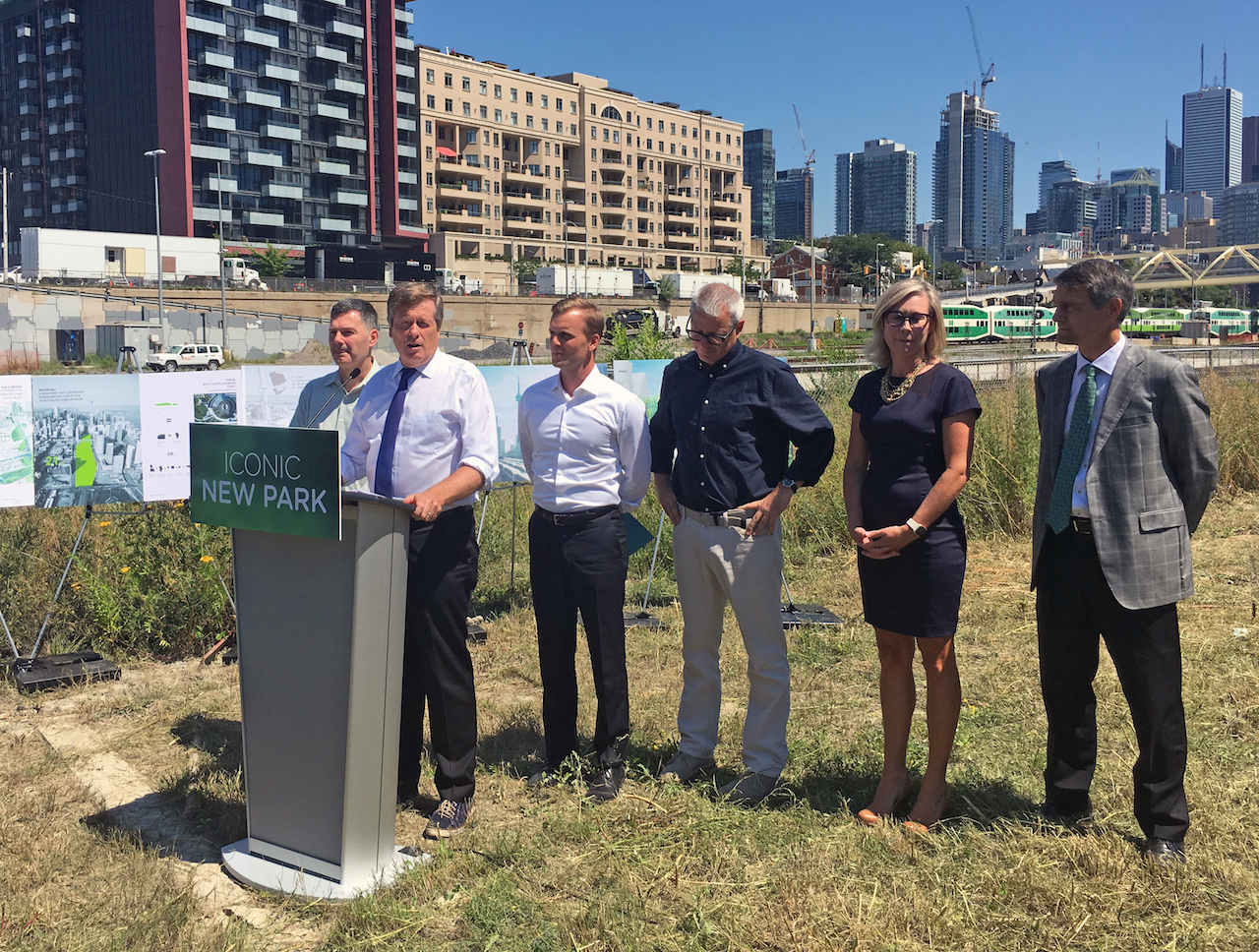 Tory was joined by Joe Cressy, Adam Vaughan, Jennifer Keesmaat, and Glenn de Baermaeker, image by Stefan Novakovic
Tory was joined by Joe Cressy, Adam Vaughan, Jennifer Keesmaat, and Glenn de Baermaeker, image by Stefan Novakovic
With Downtown Toronto's population continuing to surge, the 8.5 hectare park would provide a much-needed communal space to Downtown neighbourhoods where public infrastructure has not kept pace with development, the Mayor explained. "The Downtown core has far less parkland than other parts of the City," said Tory, stressing the urgent need to provide social infrastructure—including transit, affordable housing, and public space—to keep up with explosive population growth.
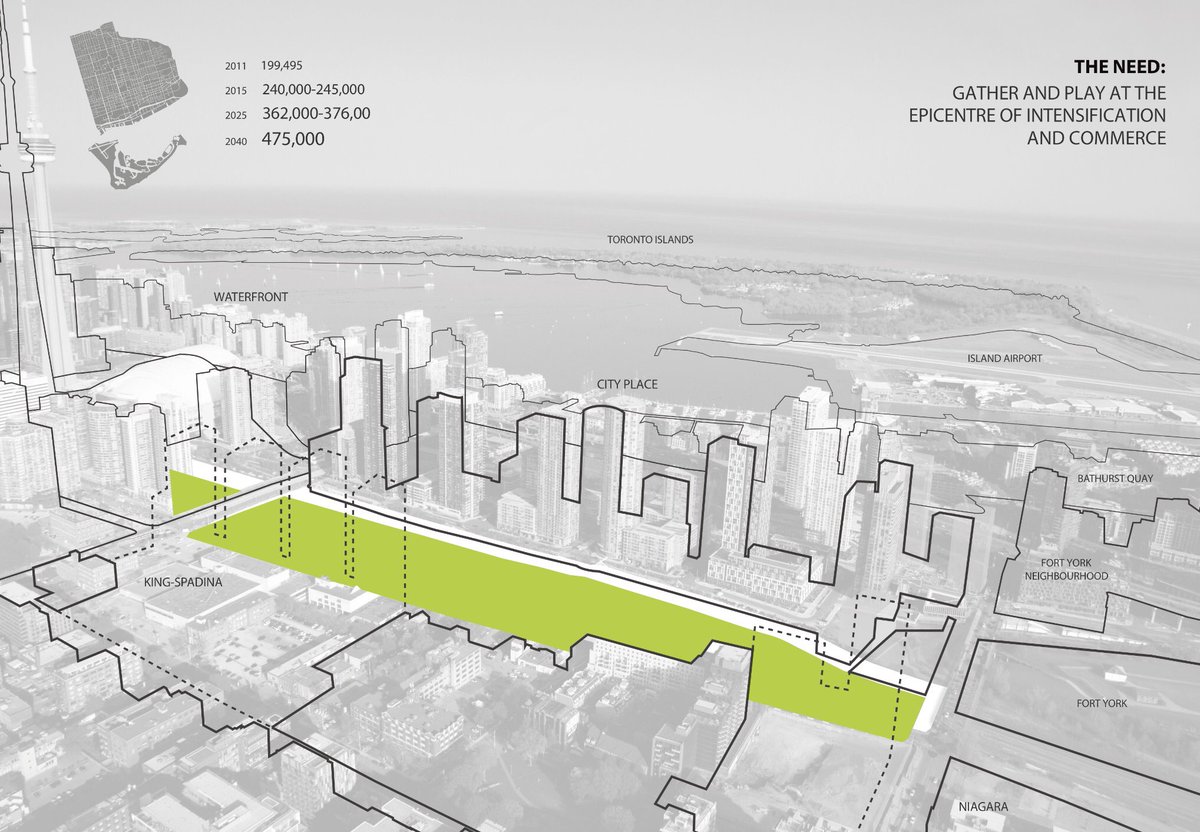 The area of the proposed 21-acre park (not yet designed), image courtesy of the City of Toronto
The area of the proposed 21-acre park (not yet designed), image courtesy of the City of Toronto
In reclaiming scarce urban land, the plan follows international projects like Chicago's Millennium Park and New York's Hudson Yards—as well as the much smaller Mouth of the Creek Park planned beside and beneath the Bathurst Street Bridge. By decking over the existing Union Station Rail Corridor, the tracks below could remain operational while the space above would be reclaimed for public use. For the CityPlace, King Spadina, and Fort York neighbourhoods that straddle either side of the rail corridor, the park would provide both a vital communal space and a link to others part of Downtown. For the geographically sequestered CityPlace in particular, an improved connection with the more established urban environments to the north could be a significant boon.
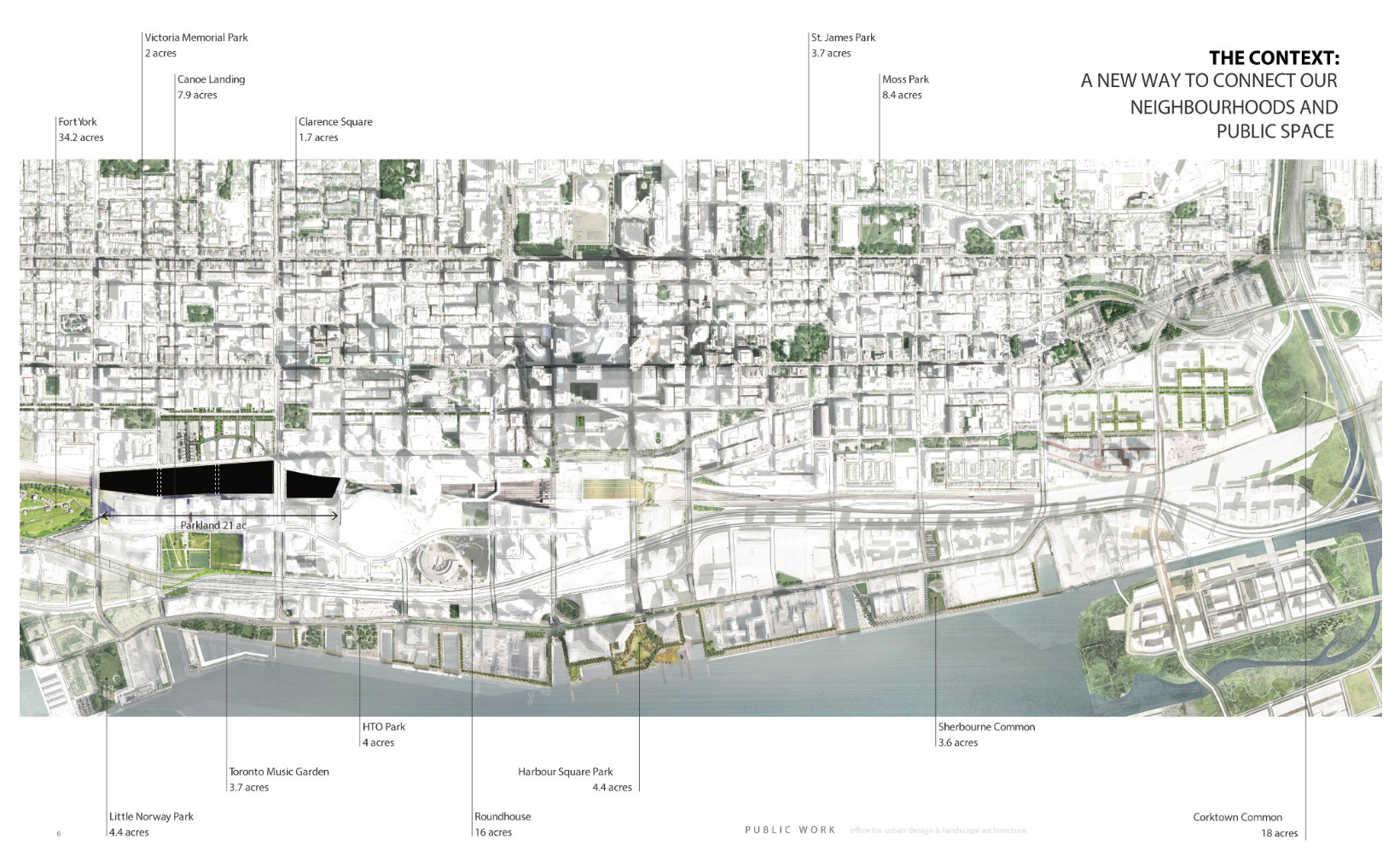 The urban context, showing the relative lack of park space (click for a closer view), image courtesy of the City of Toronto
The urban context, showing the relative lack of park space (click for a closer view), image courtesy of the City of Toronto
Following today's announcement, City Staff will compile a preliminary report, which will be presented to the Executive Committee on September 22nd. The report will outline the steps needed to secure—and then redevelop—the space, beginning with the City's acquisition of air rights from Toronto Terminals Railway, which is jointly owned by CN and CP.
From there, the specifics of the plan are expected to take somewhat clearer shape in the coming months. As it stands, Tory was not able to provide a concrete timeline or cost estimate for the project. However, the Mayor noted that a project of this scope is likely to cost "tens of millions of dollars per acre." Additionally, he noted that the 4-5 year planning and construction timelines of similar projects throughout the world may indicate a generally expected schedule for the new park.
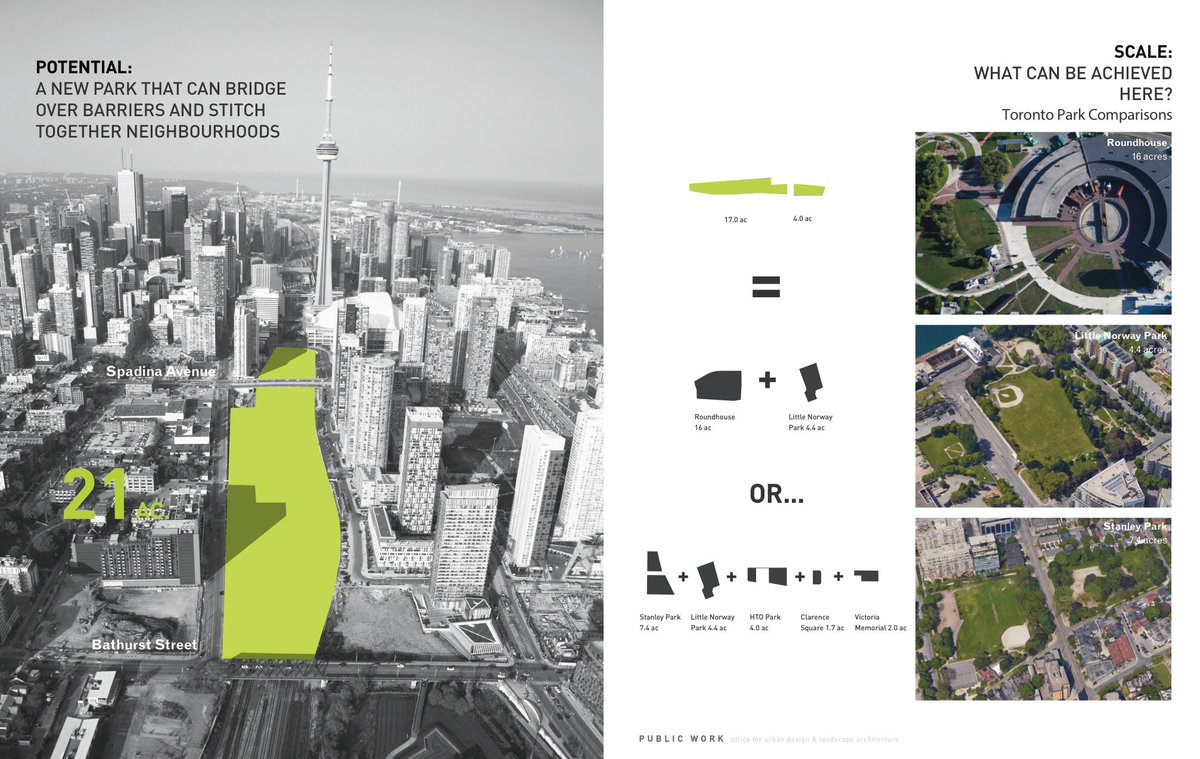 A comparison of the 21-acre space with other Downtown parks, image courtesy of the City of Toronto
A comparison of the 21-acre space with other Downtown parks, image courtesy of the City of Toronto
Prepared by Toronto landscape architecture firm Public Work, an outline of the project's scale underlines the new park's potential as a conduit of urban activity. At 21 acres, the space is equivalent in size to Stanley Park, Little Norway, HTO Park, Clarence Square, and Victoria Memorial, combined. As Ward 20 Councillor Joe Cressy put it, parks and public spaces are particularly important for condominium residents, for whom space is at a premium. "If you live in a condo, the park becomes your backyard," Cressy told the audience.
At times, the din of GO and UPX trains threatened to drown out parts of the Mayor's speech, underlining the impact of the rail corridor on Toronto's urban core. Surrounded by residential towers, the land remains a relic of an industrial era. While the King Spadina and CityPlace neighbourhoods adjacent to the rail corridor had a combined population of approximately 1,000 residents in 1996, over 40,000 people now call those communities home. Over the next decade, more than 30,000 are expected to join them.
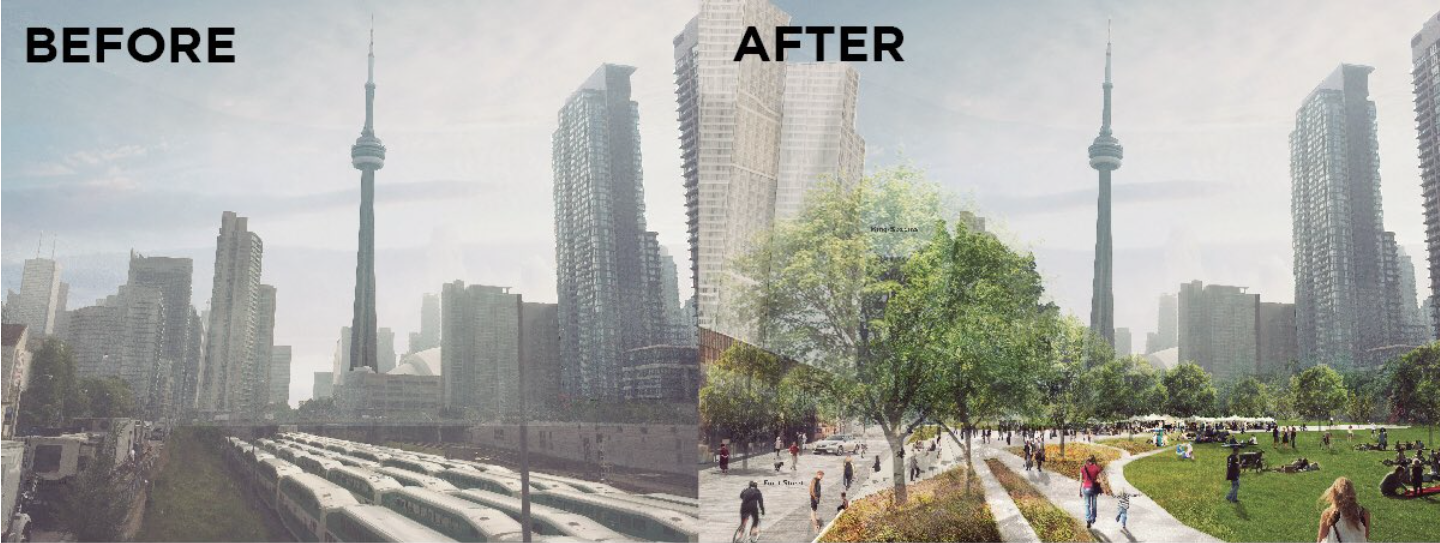 A before and after comparison of the space, image courtesy of the City of Toronto
A before and after comparison of the space, image courtesy of the City of Toronto
For Downtown as a whole, the total population is expected to double—to 475,000 people—over the next 25 years. Considering the extent of population growth, and the spatially limited high-rise homes being built, public space is coming at an increased premium in Downtown Toronto. At 21 acres, a park of this magnitude would be huge—and hugely important.
We will keep you updated as more information about the proposed Rail Deck Park—and a plan to fund it—becomes available. Want to share your thoughts? Leave a message in the space below this page, or join in the ongoing conversation in our Forum.
EDITOR'S NOTE: This article was amended to reflect the fact that the air rights above the Union Station Rail Corridor continue to be owned by Toronto Terminals Railway, and not Metrolinx, as previously reported.

 9.4K
9.4K 












